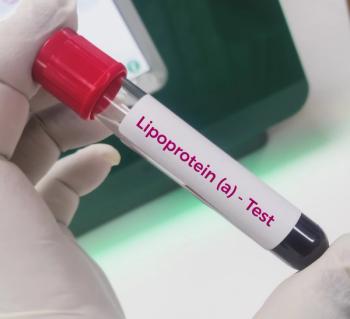
ACO results released: What health execs should know
Quality, financial performance provides glimpse at long-term effects
Medicare accountable care organizations (ACOs) continue to improve the quality of care for Medicare beneficiaries, while generating financial savings, according to the Centers for Medicare & Medicaid Services (CMS) 2014 quality and financial performance
According to CMS, during 2014 (the third performance year), Pioneer ACOs generated total model savings of $120 million, up from the $96 million in savings generated in 2013 (performance year 2), and $88 million in savings generated in 2012 (performance year 1).
Of 15 Pioneer ACOs that generated savings, 11 generated savings outside a minimum savings rate and earned shared savings. These 11 ACOs qualify for shared savings payments of $82 million. Of five Pioneer ACOs that generated losses, three generated losses outside a minimum loss rate and owed shared losses. These ACOs are paying CMS $9 million in shared losses.
Total model savings per ACO increased from $2.7 million per ACO in performance year 1 to $4.2 million per ACO in performance year 2 to $6 million per ACO in performance year 3.
In 2014, Pioneer ACOs showed improvements in 28 of 33 quality measures and experienced average improvements of 3.6% across all quality measures. Medicare Shared-Savings Program (MSSP) ACOs that reported quality measures in 2013 and 2014 improved on 27 of 33 quality measures. Quality improvement was shown in measures such as patients’ ratings of clinicians’ communication, beneficiaries’ rating of their doctor, screening for tobacco use and cessation, screening for high blood pressure, and electronic health record use.
The Medicare Shared-Savings Program participants, operate under the same premise as the Pioneer ACOs, but they experience lower levels of risk and reward. The Pioneer ACO
Model is for healthcare organizations and providers that are already experienced in coordinating care for patients across care settings. It allows these provider groups to move more rapidly from a shared savings payment model to a population-based payment model on a track consistent with, but separate from, the MSSP.
According to CMS, the Pioneer ACO Model requires significant upfront investment for participants as well as changes in clinical practice that take time to implement. CMS expects participants in all Medicare ACO programs to improve over time and to return savings to Medicare.
In 2014, 20 Pioneer and 333 Shared-Savings Program ACOs generated more than $411 million in savings, which includes all ACO savings and losses.
Ninety-two Shared Savings Program ACOs held spending $806 million below their targets and earned performance payments of more than $341 million as their share of program savings. No Track 2 ACOs owed CMS losses. Track 2 ACOs follow a two-sided model for their first agreement period. Although the two models share many common features, such as eligibility requirements, quality measures and shared savings methodology, under the two-sided model ACOs are accountable for shared losses but also have the opportunity for a greater percentage of shared savings.
An additional 89 ACOs reduced healthcare costs compared to their benchmark, but did not qualify for shared savings, as they did not meet the minimum savings threshold.
Benchmark questions
ACOs with more experience in the program were more likely to generate shared savings. Among ACOs that entered the program in 2012, 37% generated shared savings, compared to 27% of those that entered in 2013, and 19% of those that entered in 2014.
Muhlestein“[CMS] said that there were collective savings from the ACO programs because they only included organizations that saved money,” says David Muhlestein, senior director of research & development at Leavitt Partners. “There were also a number of ACOs that performed below their benchmark, but [CMS] didn’t count those in the total. [CMS] really shouldn’t take credit for the ACOs that saved money while not counting those that did poorly, but at the same time, it’s unlikely that the fact that an organization became an ACO really caused it to perform below its benchmark. A bigger issue is that the benchmarks may simply not be very accurate or useful because they are calculated nationally while individual markets are very different.”
Managed care executives need to be aware that the Medicare Shared-Savings Program is not a perfect program and there are valid concerns associated with it, including how it’s structured, according to Muhlestein.
“At the same time, there is strong evidence that organizations that have been part of the ACO program for longer are doing better and that means that organizations are figuring this out, it just takes longer than most would prefer,” he says.
Based on this report, Muhlestein offers five takeaways for healthcare executives:
1. Keep it in perspective.
Rather than focusing on the short-term results of the Medicare ACO programs, focus on the broader goal of using payment reform to effect delivery reform.
2. Take advantage of low risk.
Right now the MSSP is structured so that it’s favorable for participants because it doesn’t require downside risk. Now may be a good opportunity for health systems to participate and explore value-based arrangements. (ACOs in the MSSP Program may only stay in Track 1, which doesn't require downside risk, for two agreement periods.) “Later on risk-based arrangements may be forced on providers with less favorable terms,” Muhlestein says.
3. Succeeding takes time.
Transitioning toward value-based arrangements is a challenging, lengthy endeavor. “Few organizations are able to make the transition in just a year or two, so plan appropriately and set expectations that any savings may take multiple years to achieve,” he says.
4. Don't make wide-ranging conclusions (positive or negative) related to accountable care or the MSSP. “It’s still too early to know if the movement has staying power and nobody knows how accountable care will evolve over the next five years,” says Muhlestein.
5. ACOs are here to stay.
“The MSSP may or may not last, and individual ACOs will surely fail," says Muhlestein. "Even the name ‘accountable care organization’ may not endure. The movement of transitioning risk for defined populations to providers, though, is going to continue and grow over time. Some people will fight against this transition, but enough payers and providers have committed to this that, coupled with strong support from the federal government, ultimately providers will be forced to take risk. The timing of this and the details of how, exactly, it’s structured, will be worked out over time.”
According to CMS, with the Medicare ACO program, as with any new program, refinements and improvements will be made over time.
Newsletter
Get the latest industry news, event updates, and more from Managed healthcare Executive.






















































